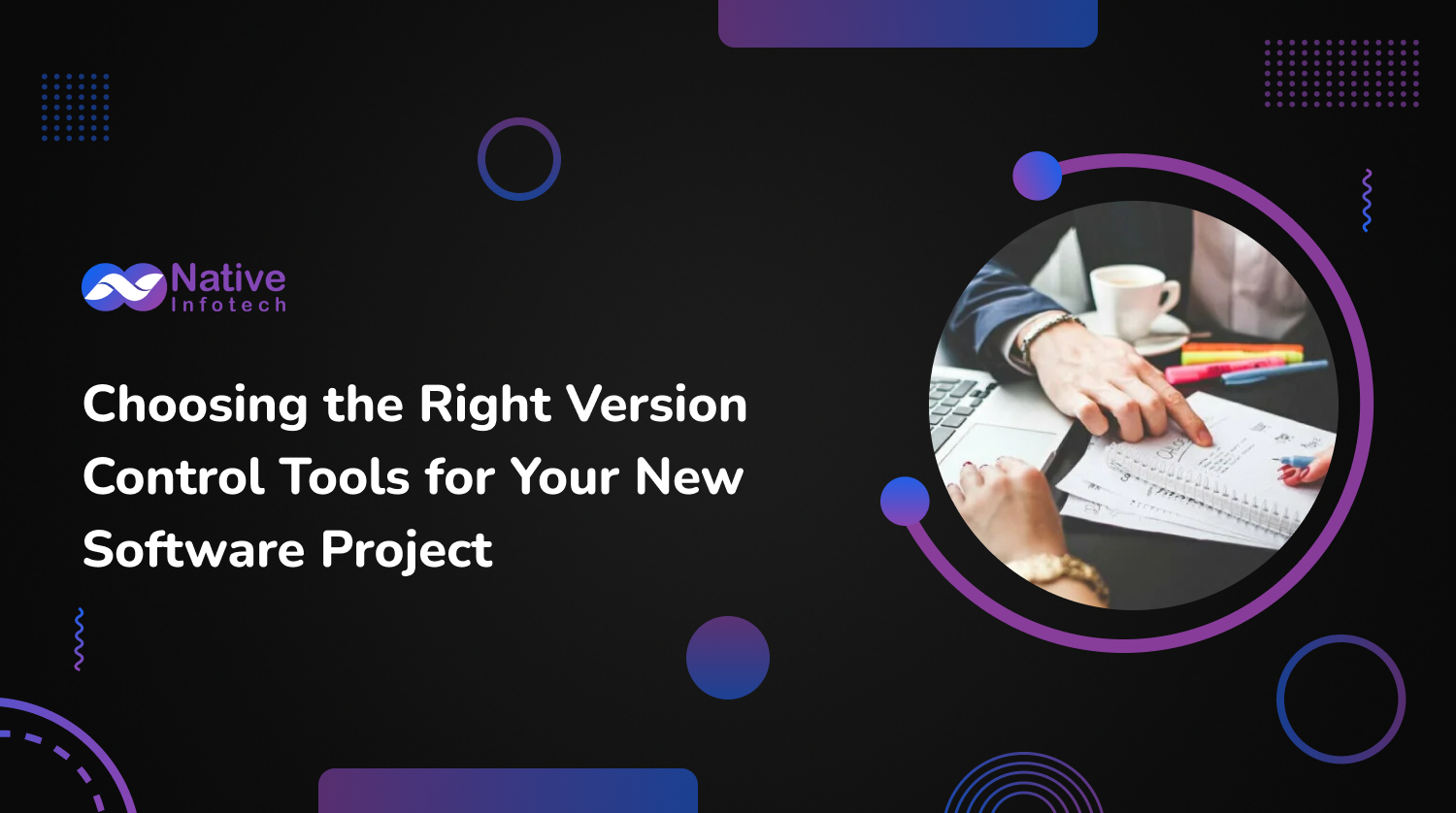
In the fast-paced world of software development, selecting the right version control tools is essential for the success of your project. With numerous options available, it can be challenging to determine which tool will best meet your needs. This guide will help you navigate through the process of choosing the right version control tools by examining their features, benefits, and drawbacks.
Understanding Version Control Systems
Version control systems (VCS) are crucial for managing changes to source code over time. They allow multiple developers to work on a project simultaneously, track changes, and revert to previous versions if necessary. There are two main types of version control systems: centralized version control systems (CVCS) and distributed version control systems (DVCS).
Centralized Version Control Systems
Advantages of CVCS
☛ Simplicity: Easier to understand and use for beginners.
☛ Centralized Management: All project files and versions are stored in one place, making it easier to manage.
☛ Access Control: Easier to control access and permissions.
Disadvantages of CVCS
☛ Single Point of Failure: If the central server goes down, the entire project becomes inaccessible.
☛ Limited Offline Capabilities: Developers need a constant connection to the central server to commit changes.
Distributed Version Control Systems
Distributed version control systems, like Git and Mercurial, store the complete history of the project in every developer’s local repository. This allows for greater flexibility and collaboration.
Advantages of DVCS
- No Single Point of Failure: Each developer has a complete copy of the project, so the system is more resilient.
- Enhanced Collaboration: Developers can work offline and synchronize changes later.
- Branching and Merging: Easier and more efficient branching and merging capabilities.
Disadvantages of DVCS
- Complexity: More complex to understand and use, especially for beginners.
- Storage Requirements: Requires more storage space as every developer has a full copy of the repository.
Key Features to Consider in Version Control Tools
When choosing a version control tool for your software project, it’s important to consider the following features:
Ease of Use
The tool should be easy to use and understand, especially for new team members. A user-friendly interface and comprehensive documentation can significantly reduce the learning curve.
Integration with Other Tools
Ensure the version control system integrates well with other tools your team uses, such as IDEs, CI/CD pipelines, and project management tools. Seamless integration can streamline workflows and improve productivity.
Scalability
Choose a version control tool that can scale with your project’s growth. The system should handle an increasing number of files, contributors, and changes without compromising performance.
Branching and Merging
Effective branching and merging capabilities are essential for parallel development and feature isolation. The tool should support easy creation, management, and merging of branches.
Performance
The version control system should perform well, even with large projects and numerous changes. Slow performance can hinder productivity and frustrate developers.
Security
Security features, such as access control, encryption, and audit logs, are crucial for protecting your codebase and ensuring only authorized personnel can make changes.
Community and Support
A strong community and reliable support are important for addressing issues and finding solutions quickly. Look for tools with active communities, comprehensive documentation, and professional support options.
Popular Version Control Tools
Several version control tools are popular among software developers. Here, we will explore some of the most widely used tools and their key features.
Git
Git is the most popular distributed version control system, known for its flexibility, performance, and robust branching and merging capabilities. Created by Linus Torvalds in 2005, Git has become the de facto standard for version control in the software development industry.
Key Features of Git
- Distributed Architecture: Every developer has a complete copy of the repository.
- Branching and Merging: Powerful and flexible branching and merging capabilities.
- Performance: Efficient handling of large projects and numerous changes.
- Community and Support: Extensive community, documentation, and third-party tools.
Use Cases for Git
- Open Source Projects: Git’s distributed nature and robust collaboration features make it ideal for open-source projects.
- Large Teams: Git can handle the complexities and scale of large development teams effectively.
Subversion (SVN)
Subversion, or SVN, is a centralized version control system that has been widely used for many years. It is known for its simplicity and ease of use.
Key Features of SVN
- Centralized Repository: Single source of truth for all project files.
- Access Control: Fine-grained control over who can access and modify the repository.
- Integration: Good integration with many development tools and environments.
Use Cases for SVN
- Small to Medium-Sized Teams: SVN is suitable for teams that prefer a centralized approach and have a smaller number of developers.
- Projects with Simple Version Control Needs: Ideal for projects that do not require complex branching and merging.
Mercurial
Mercurial is another distributed version control system that is similar to Git. It is known for its simplicity, performance, and scalability.
Key Features of Mercurial
- Distributed Architecture: Each developer has a full copy of the repository.
- Performance: Efficient handling of large projects and numerous changes.
- Ease of Use: Simpler and more user-friendly compared to Git.
Use Cases for Mercurial
- Teams Seeking Simplicity: Mercurial is ideal for teams that need the benefits of a distributed system without the complexity of Git.
- Large Projects: Mercurial can handle large projects efficiently.
Perforce
Perforce is a version control system that is popular in industries requiring high performance and scalability, such as game development and large enterprise environments.
Key Features of Perforce
- Performance: Optimized for handling large files and numerous changes.
- Scalability: Capable of scaling to meet the needs of large enterprises.
- Security: Advanced security features to protect the codebase.
Use Cases for Perforce
- Large Enterprises: Perforce is well-suited for large organizations with extensive version control needs.
- Industries with Large Files: Ideal for industries like game development that require handling large binary files.
Choosing the Right Tool for Your Project
Choosing the right version control tool for your software project depends on several factors, including the size of your team, the complexity of your project, and your specific needs. Here are some steps to help you make an informed decision:
Assess Your Project Needs
Evaluate the requirements of your project, including the size of your codebase, the number of developers, and the complexity of your development process. This will help you determine whether a centralized or distributed system is more suitable.
Consider Team Preferences
Take into account the preferences and expertise of your development team. If your team is already familiar with a particular tool, it may be beneficial to stick with that tool to minimize the learning curve.
Evaluate Tool Features
Compare the features of different version control tools and see how they align with your project needs. Focus on key features such as branching and merging, performance, and integration with other tools.
Test the Tools
If possible, test out a few version control tools on a smaller scale before making a final decision. This will give you a better understanding of how each tool performs in practice and how well it fits with your workflow.
Conclusion
Choosing the right version control tool for your new software project is a critical decision that can impact the efficiency and success of your development process. By understanding the differences between centralized and distributed version control systems, considering key features, and evaluating your project needs, you can select a tool that best supports your team’s workflow and enhances collaboration. Whether you choose Git, SVN, Mercurial, or Perforce, the right version control tool will help you manage your codebase effectively and drive your project towards success.
Exploring the Future: 5 Big Changes Coming to Computers in 2024 and How to Get Ready
Are you ready to dive into the future of computing? The year 2024 promises to be an exciting time for technological advancements, with significant changes expected to revolutionize the way we interact with computers. From quantum computing to augmented reality, here are five big changes coming to computers in 2024 and how you can prepare…
WordPress Trends 2024: What’s New and What’s Next?
As we get closer to 2024, WordPress remains a top choice for creating websites, running a large part of the internet. It keeps changing and growing, making it important for developers, marketers, and business owners to keep up with the new trends. This article looks at the upcoming trends for WordPress in 2024, giving tips…


